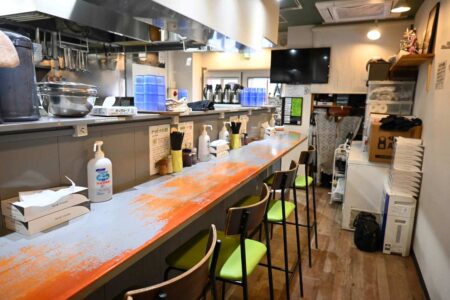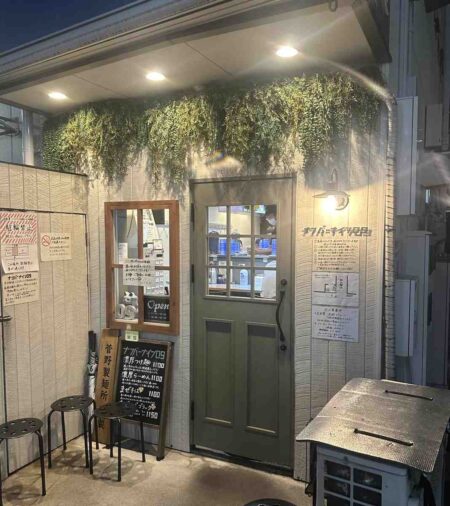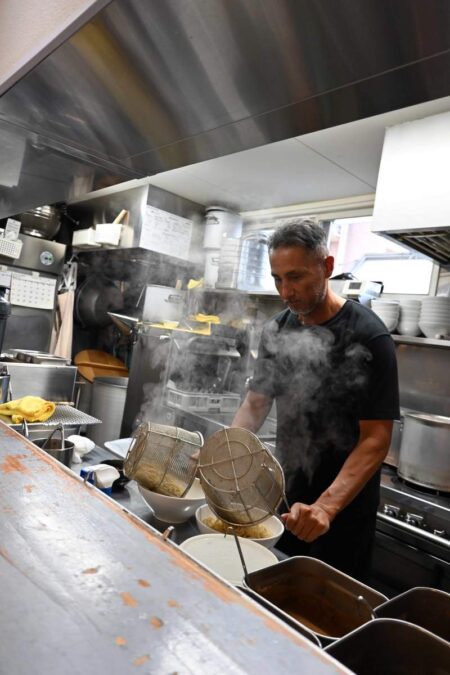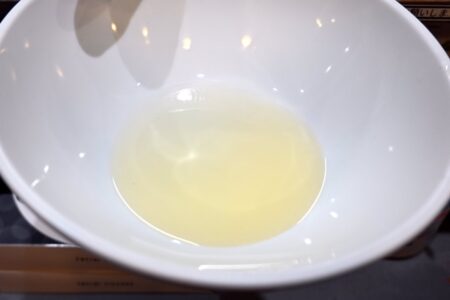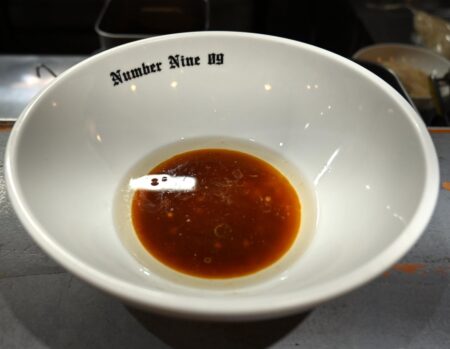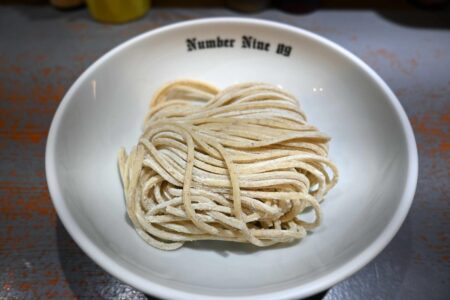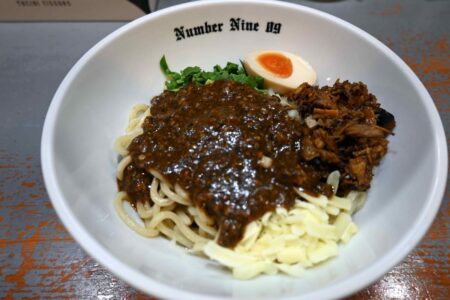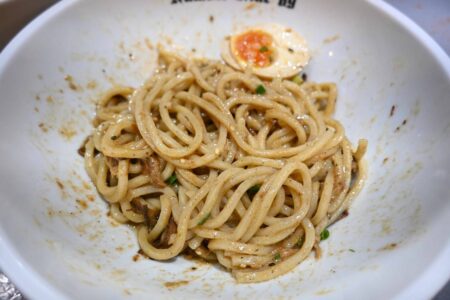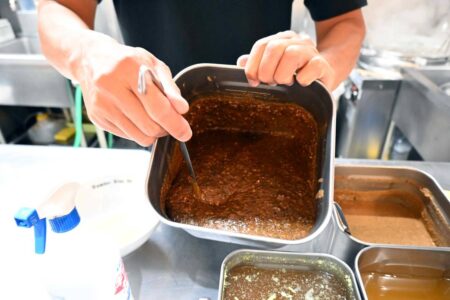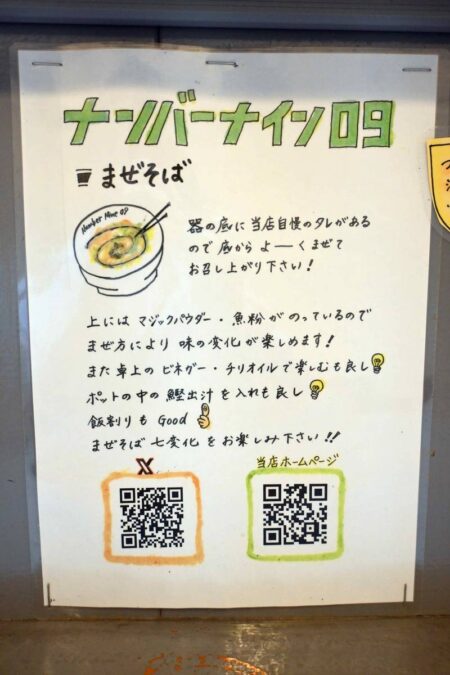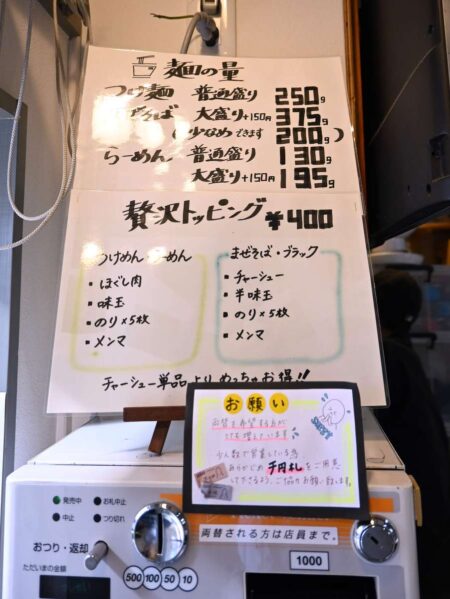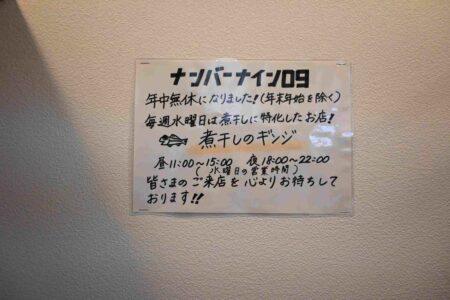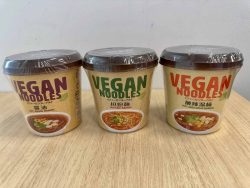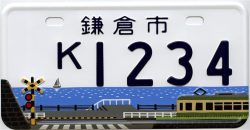Number Nine 09 / Seafood Mazesoba Offers Delight Through Various Flavors; New Charm in Historical Soka
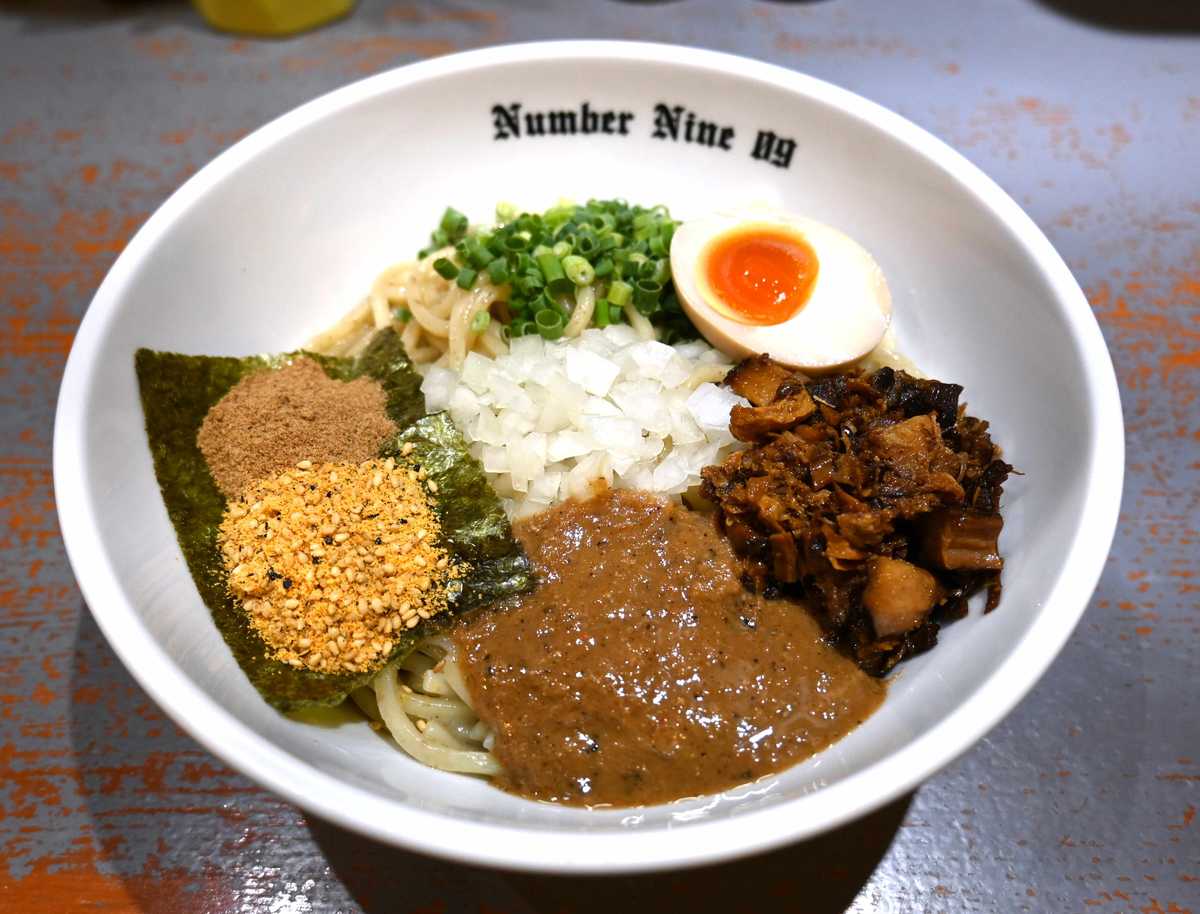
Beautifully-arranged mazesoba
18:35 JST, November 15, 2024
“Soka is becoming a ramen battleground with more and more delicious ramen shops opening up,” I was told by a person from the Soka Chamber of Commerce & Industry I met while covering a news story. He even sent me a PDF of a list of 10 recommended ramen shops in the city. Chuka soba, chicken paitan, tantanmen … Looking at the descriptions of the recommended dishes at each shop, I had no choice but to go. From the list, I was interested in “Number Nine 09,” which is popular for its mazesoba (mixed noodles with no broth) and tsukemen (dipping noodles), so I went as a customer first and later requested an interview.
When people hear Soka, Saitama Prefecture, the first thing that comes to mind is Soka rice crackers. Soka is also the location of Soka-juku, a post town during the Edo period (1603-1867) where haiku poet Matsuo Basho, who left Edo in 1689, walked through and wrote about in “The Narrow Road to the Deep North.” There is also Soka Matsubara park, which still retains the scenery of the pine trees that lined the road at that time. Now, the charm of ramen has been added to this historic city.
-
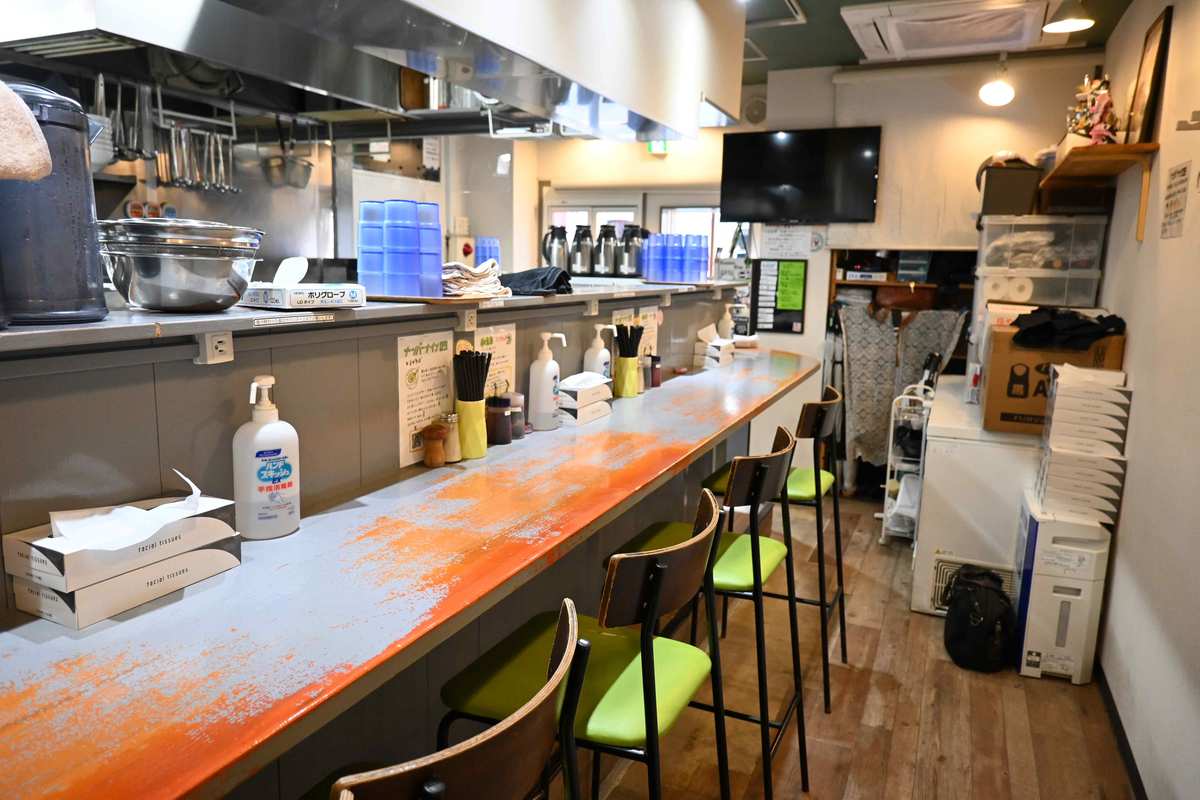
Inside the shop which has counter seating
-

The stylish-looking exterior of Number Nine 09
-

Ticket machine at the shop entrance
I arrived at the shop, which is about a 5-minute walk from the east exit of Soka Station on the Tobu Skytree Line, at 9 a.m. on a weekday in October. I was there so early because the owner, Takayoshi Sawaki, 50, was preparing for opening at 11 a.m., after which he would leave the operations to his employees, so he wouldn’t be at the shop. When I entered the stylish-looking establishment, Sawaki was in the middle of preparing everything in the kitchen just beyond the counter.
I ordered the mazesoba, ¥1,100, and a young male staff from the Soka Chamber of Commerce & Industry who was accompanying me on the interview ordered the mazesoba black, ¥1,150. The finished mazesoba looked beautiful. As it is mazesoba, there is no broth. The thick noodles are topped with a variety of ingredients, and before eating you must mix them thoroughly with the sauce and oil at the bottom of the bowl. This made me feel a bit like I was destroying a newly created beautiful work of art.
Sawaki said, “Seafood oil makes it relatively light and easy to eat.” Just like he said, when I took a bite, the seafood flavor spread in my mouth. The ingredients on top of the noodles were a paste made from mackerel simmered in miso, “magic powder” made from various spices and fish powder on top of dried seaweed, shredded chashu pork, chopped onions, green onions and half of a soft-boiled egg. Even though there were so many ingredients mixed together, it surprisingly all came together to create a unique and delicious flavor.
-

Shop owner Takayoshi Sawaki puts boiled noodles into two bowls.
-
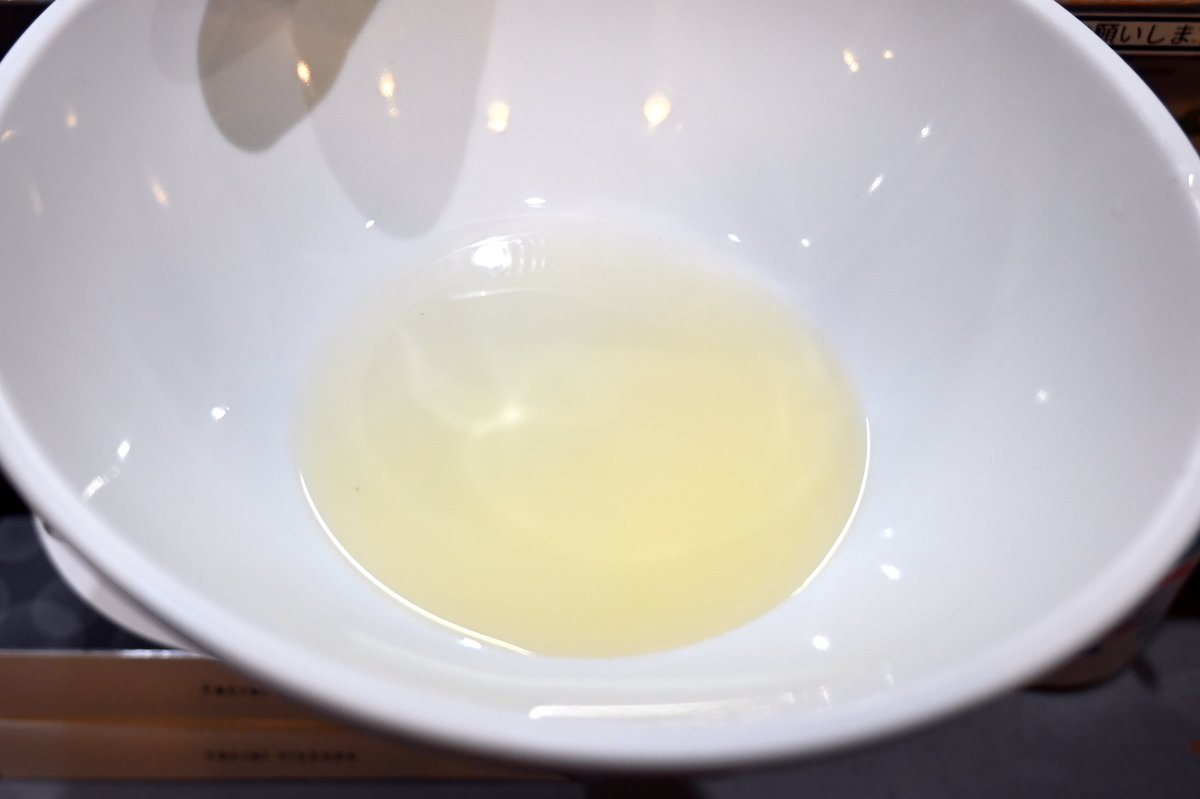
Putting the seafood oil in the bowl
-

Adding sauce to the seafood oil
-

Thick noodles blended with tapioca flour
The noodles, which are specially ordered from a noodle factory, are made by blending tapioca flour. They have a glutinous texture and take 4½ minutes to boil. When served as tsukemen, they take 7 minutes to boil. With the cost of noodles and seasonings rising, all noodle shops want to increase their table turnover rate and secure profits, but Sawaki likes the thick noodles and there are many fans who come for this flavor, so he has no intention of changing them even if the table turnover rate is low.
Next to me, the mazesoba black was ready and placed on the counter. This one had a sauce made from chili bean paste and black sesame poured over the top, and it also contained sansho (Japanese pepper). The toppings are shredded chashu pork, chopped onions, green onion and cheese. When I tried it, I could definitely taste the sansho pepper, and felt a numbing feeling. However, probably thanks to the cheese that I could also taste a mild flavor in the midst of the spicy sharpness.
-
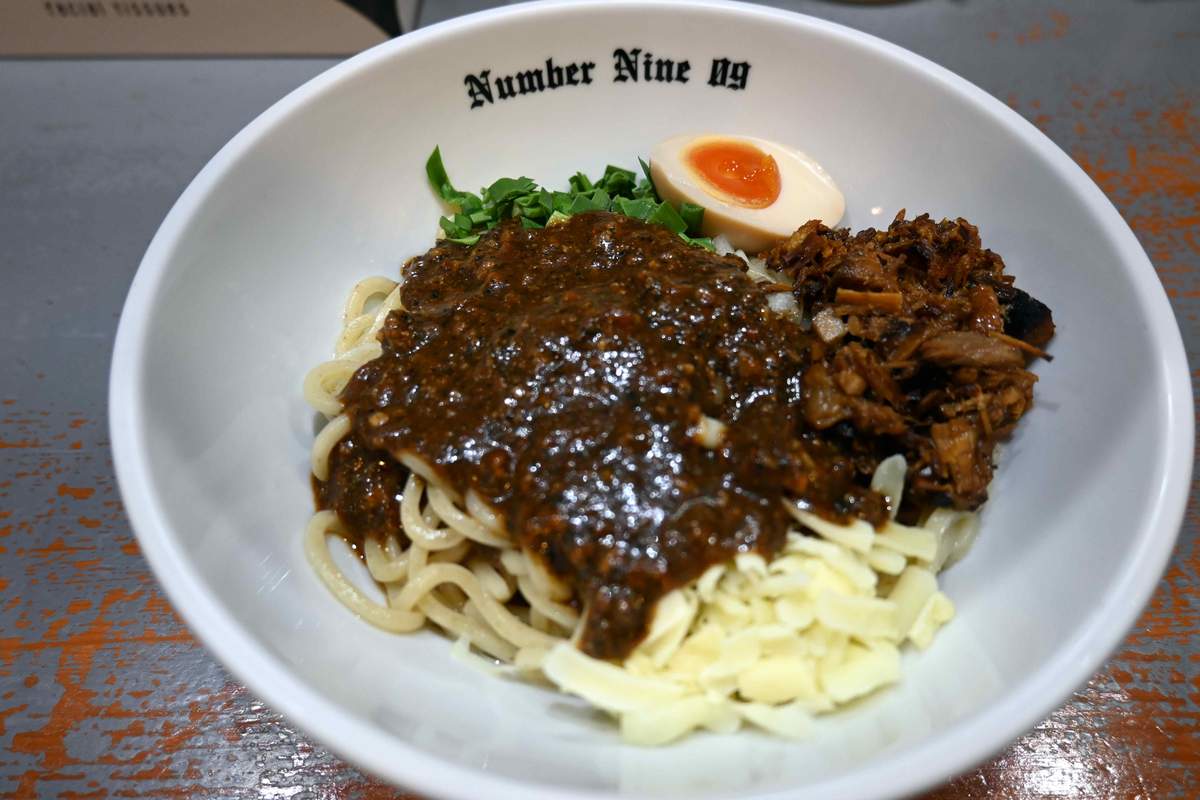
Mazesoba black
-
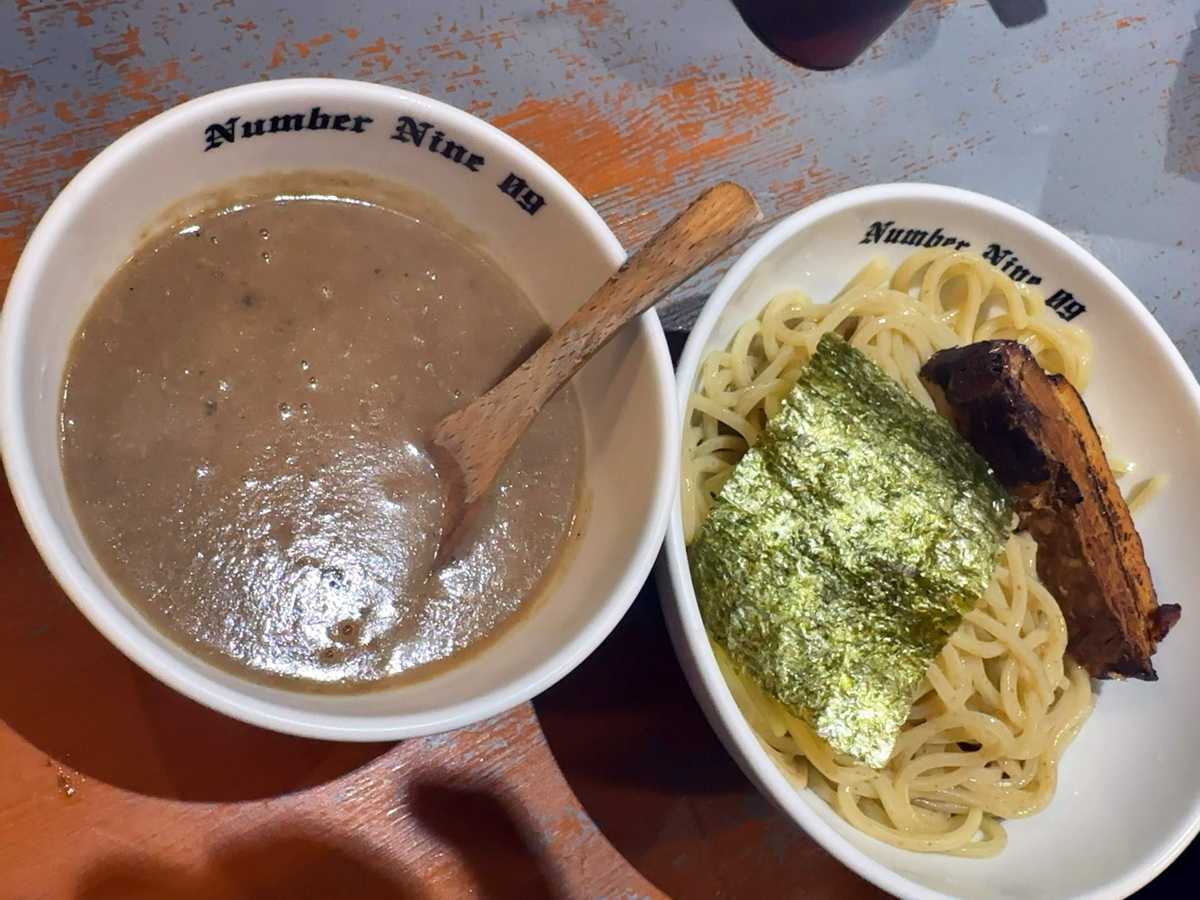
Tsukemen is the most popular dish at the shop.
-
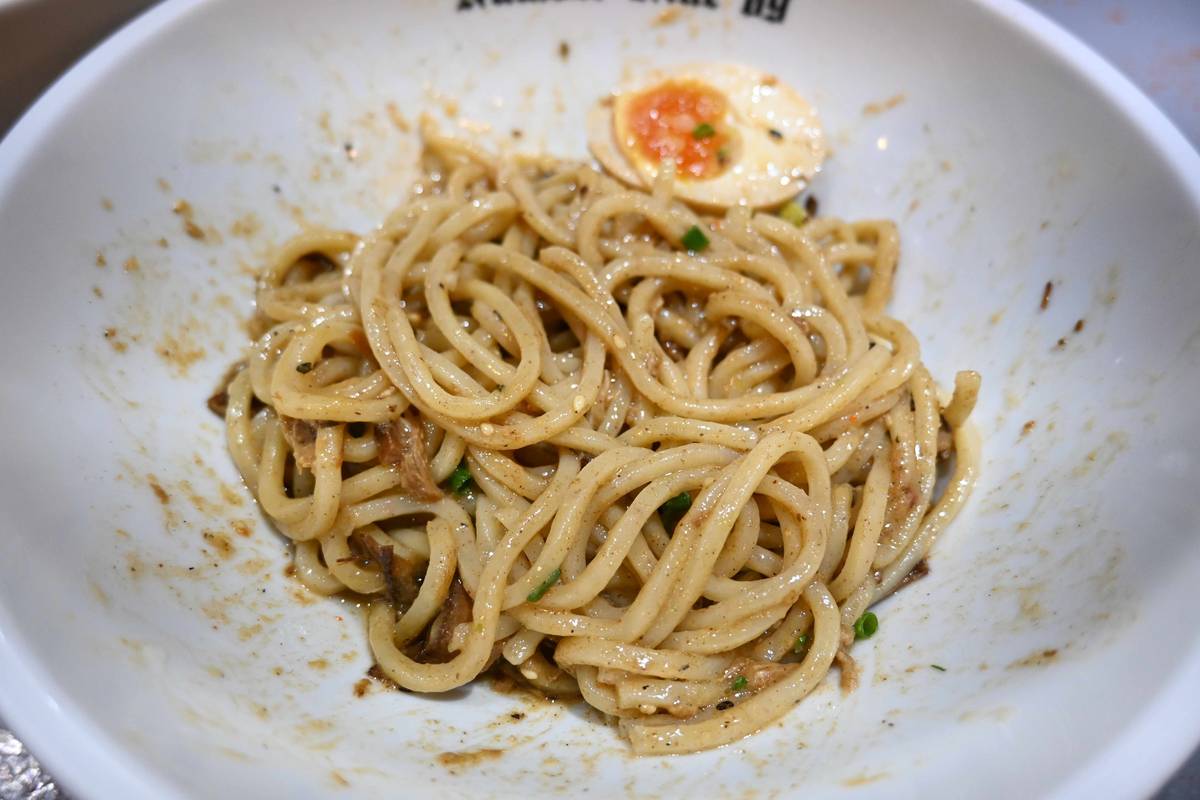
You can enjoy adjusting the flavor by adding soup to leftover noodles.
-
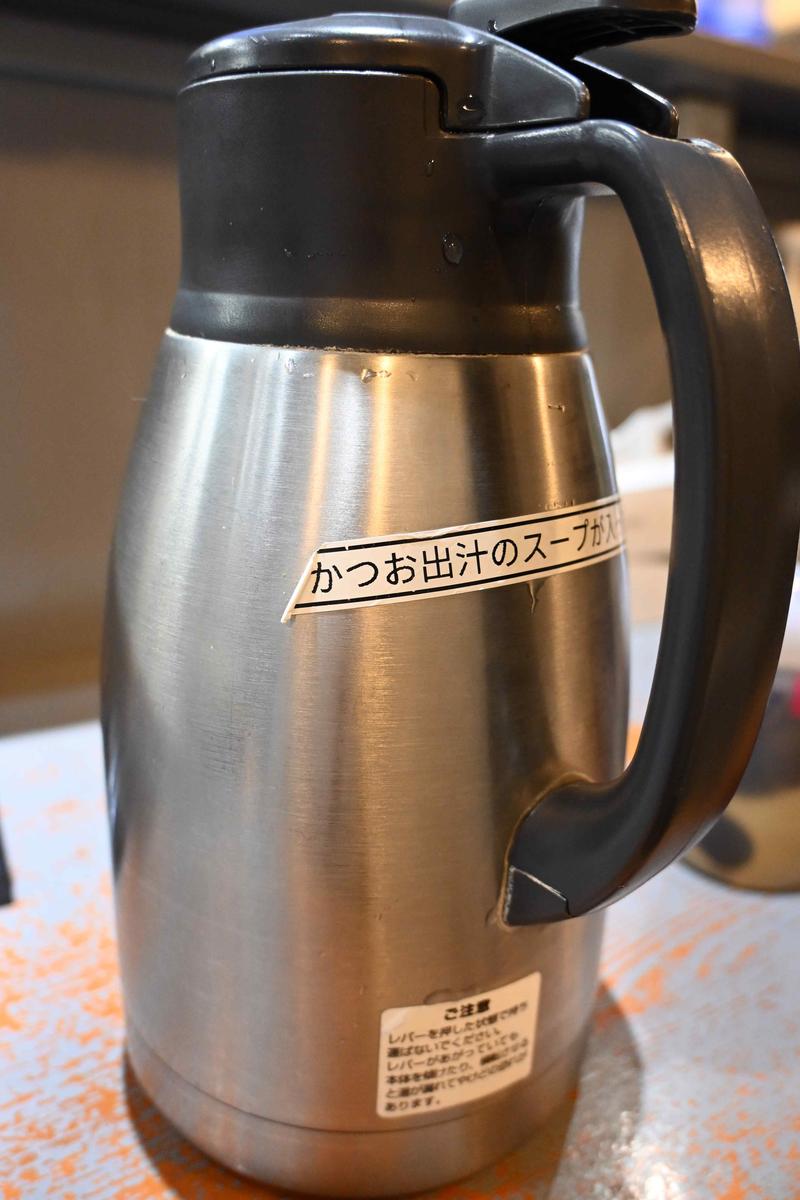
Thermos with bonito broth inside
-
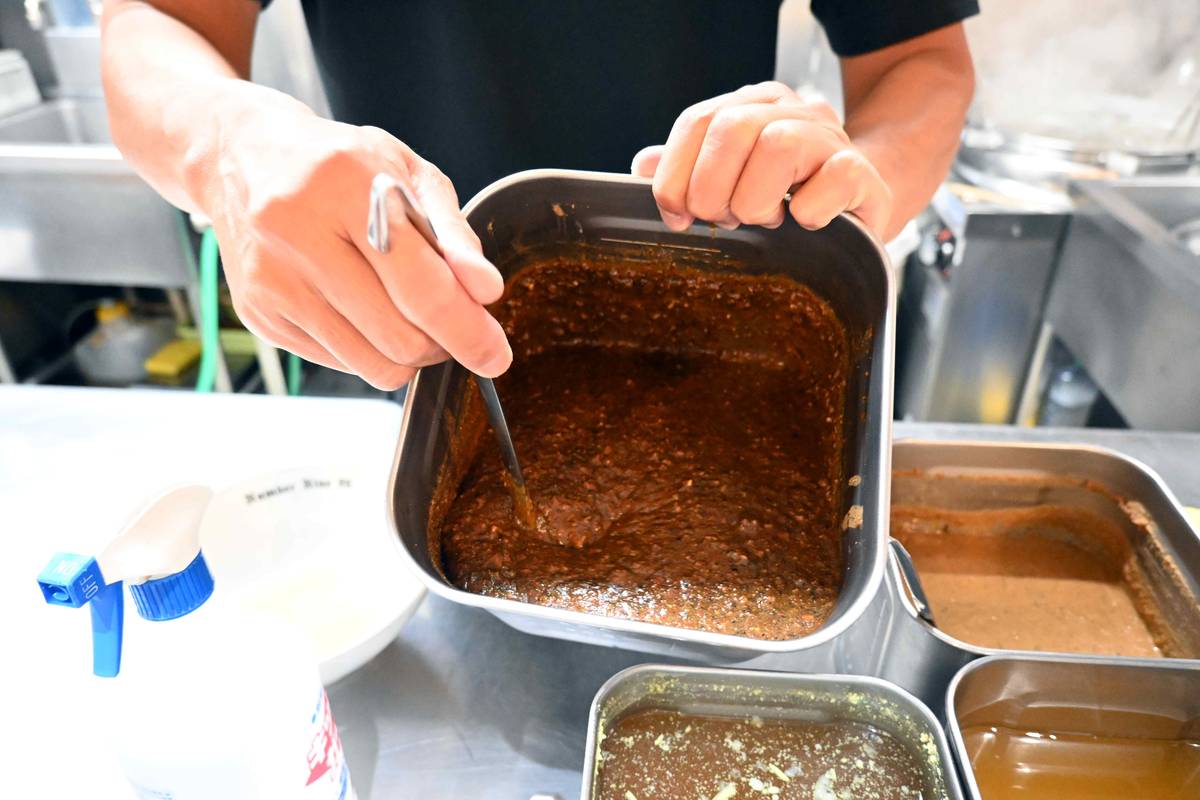
The sauce to put on top of the noodles of mazesoba black
-
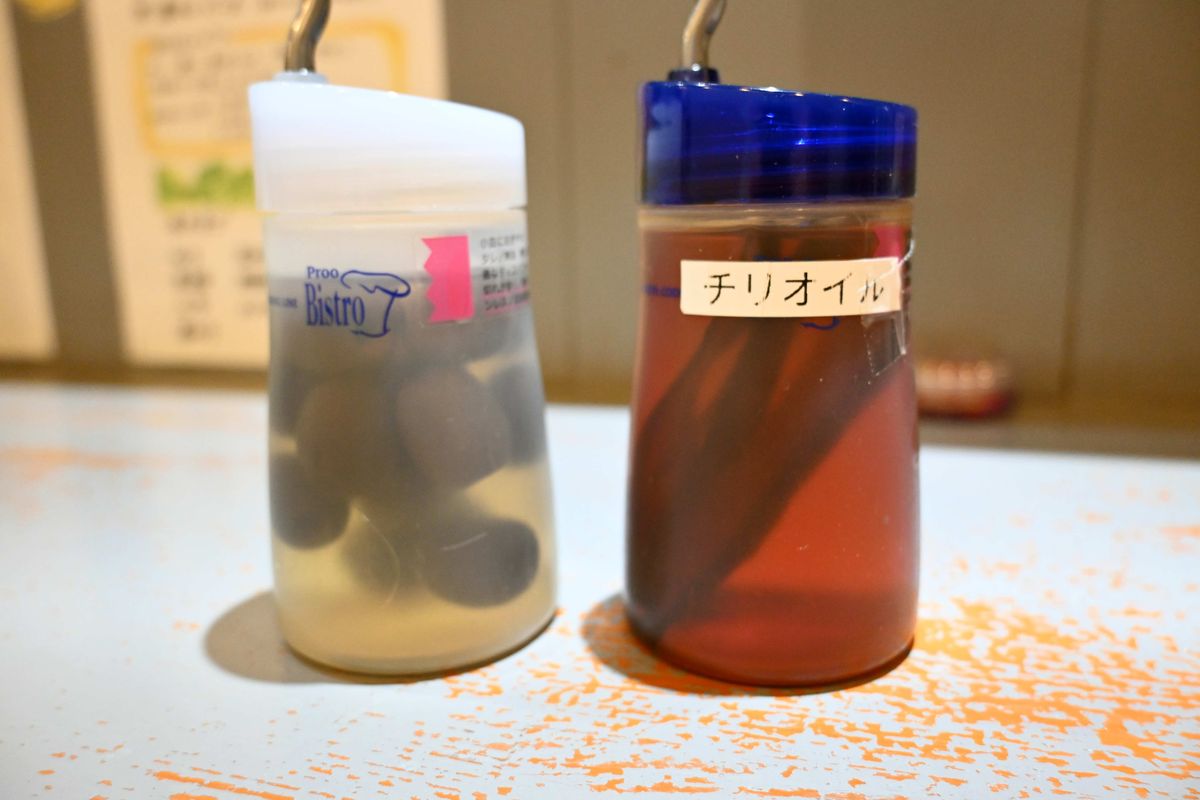
Vinegar, left, and chili oil on the counter
The tsukemen I had when I visited the shop as a customer last time was also delicious. In fact, Sawaki told me that it is more popular than the mazesoba. It is served in a thick pork and seafood broth.
“At my shop, you can enjoy a variety of different flavors,” says Sawaki. On the counter, there were thermoses of soup made from bonito stock, which you can add to your noodles if you get tired of the flavor. I left some of my mixed noodles and added the soup. The bonito flavor spread out even more, making it easier to eat and leaving a very delicious aftertaste. There is also vinegar and chili oil on the counter, so you can enjoy adjusting the flavor to your own liking.
Preparing all night into morning
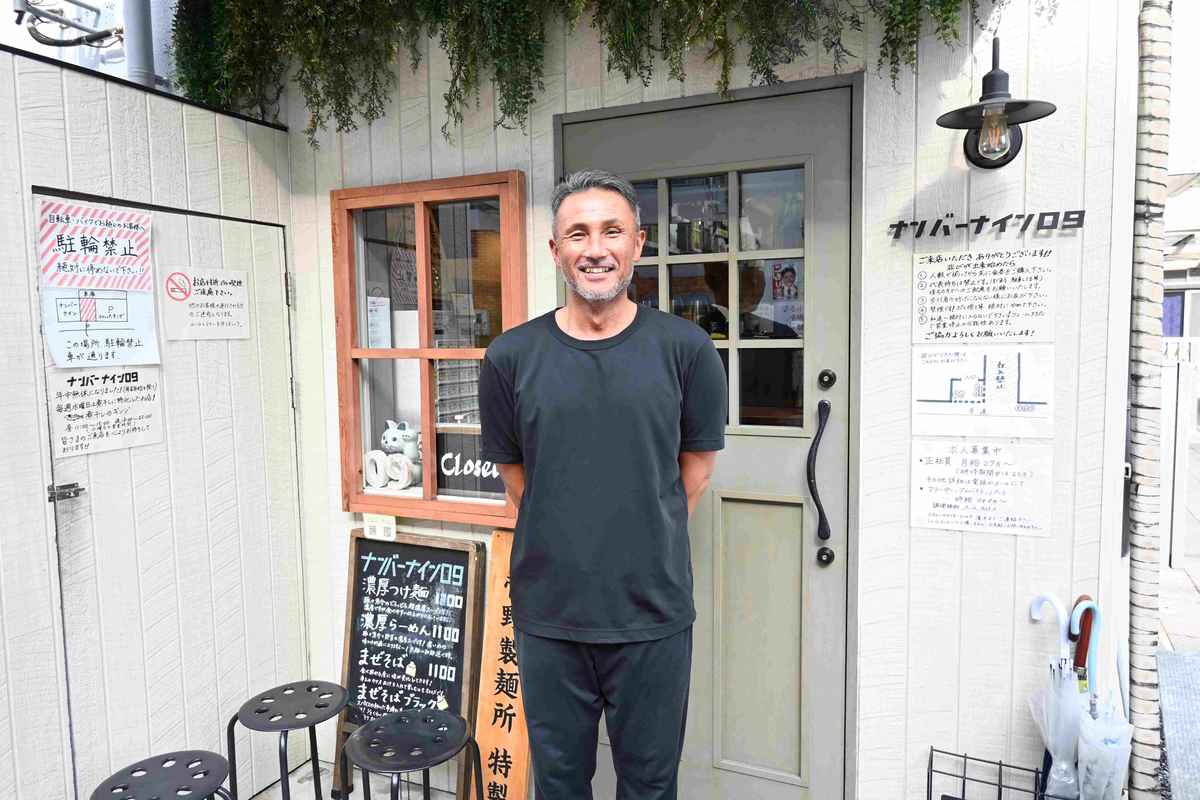
Shop owner Takayoshi Sawaki
“I used to be a construction worker,” says Sawaki. Now that he mentioned it, with his tanned skin, strong build and fearless face he still had that look.
Sawaki’s career change happened suddenly. When he was his mid-thirties, while he was wondering whether he should continue to work in the construction industry doing hard physical labor, he happened to walk into a small ramen shop. Seeing how a mother and son were running the place, Sawaki, who was raised by his mother, was inspired to think, “It would be nice to own a shop like this.”
Sawaki, who had never even held a cooking knife before, decided to enter the ramen industry. He trained for six years at a now closed famous ramen shop called Tsubaki in Nishiarai, Adachi Ward, Tokyo. He says the shop had a huge impact on him with its delicious tonkotsu seafood tsukemen. In April 2013, he opened Number Nine 09 in Soka, a place he had been familiar with. Sawaki said, “My birthday is the 9th, so I decided that my lucky number is 9 and named the shop after it.”
-
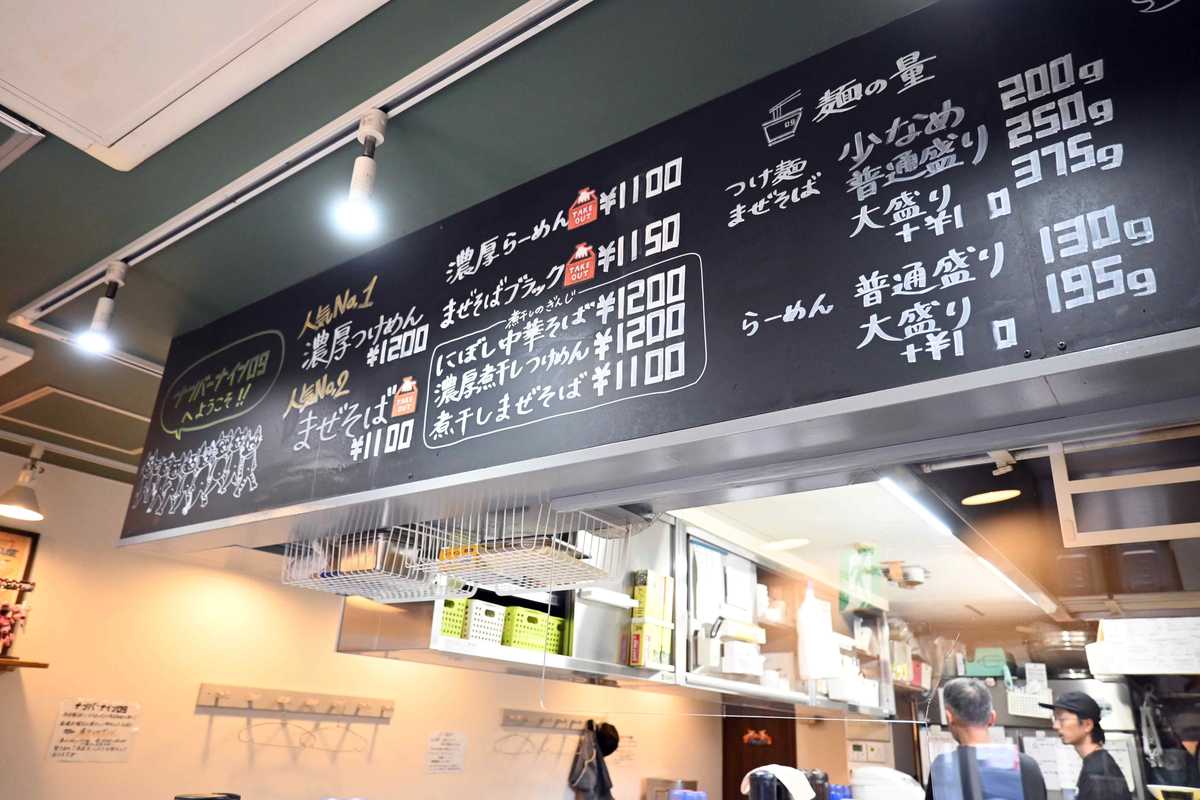
Information on various ramen menu items
-
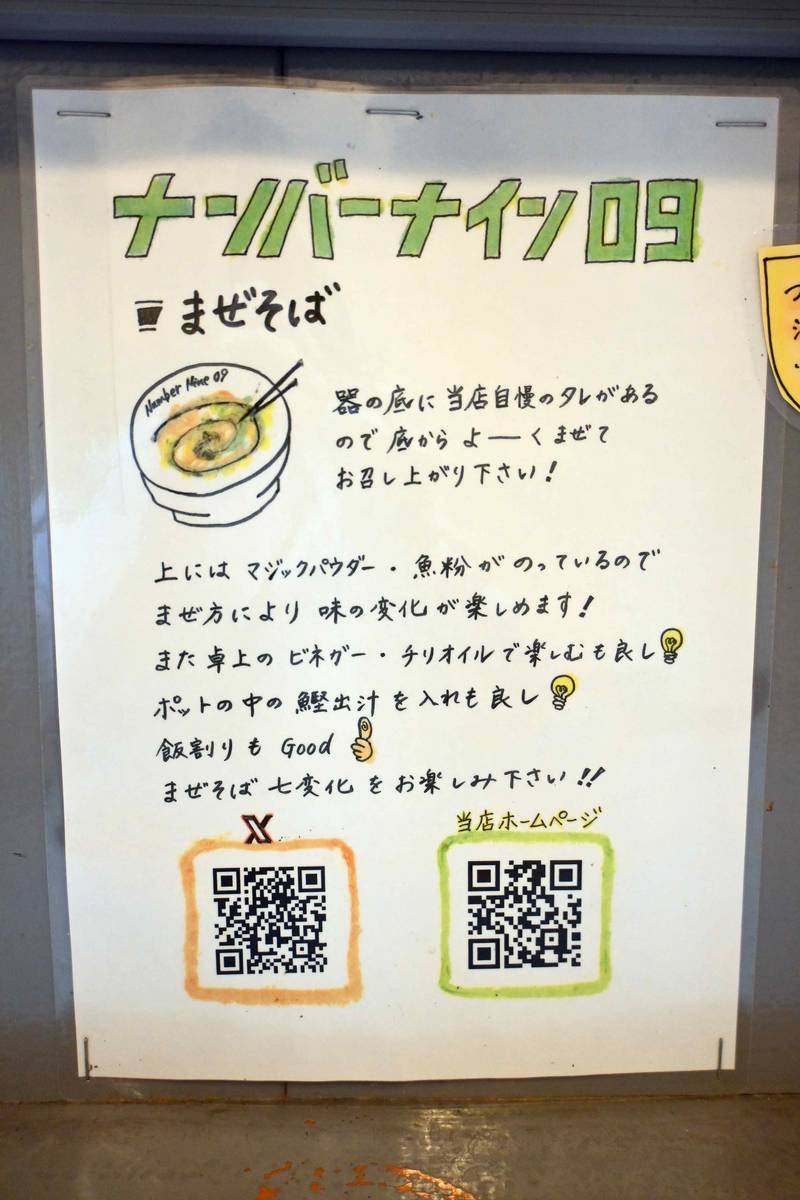
An explanation of how to enjoy mazesoba
-
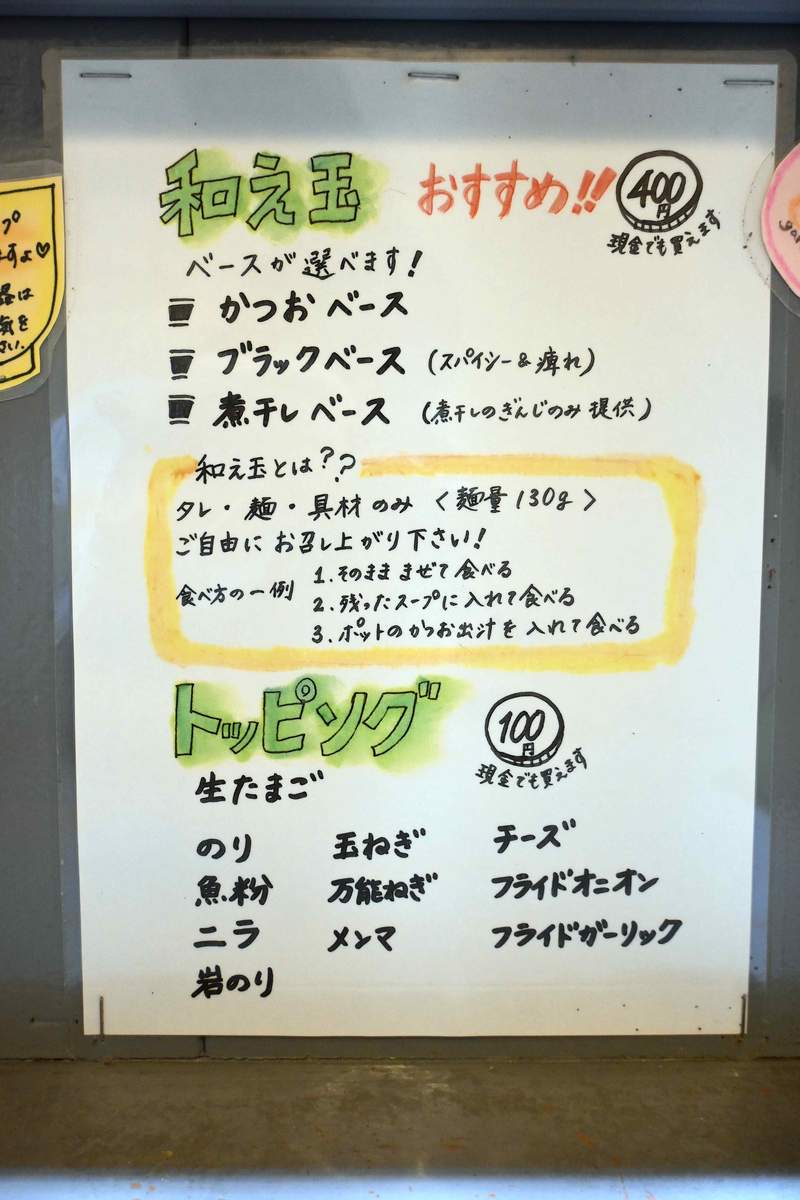
Information on additional noodle and topping options
-
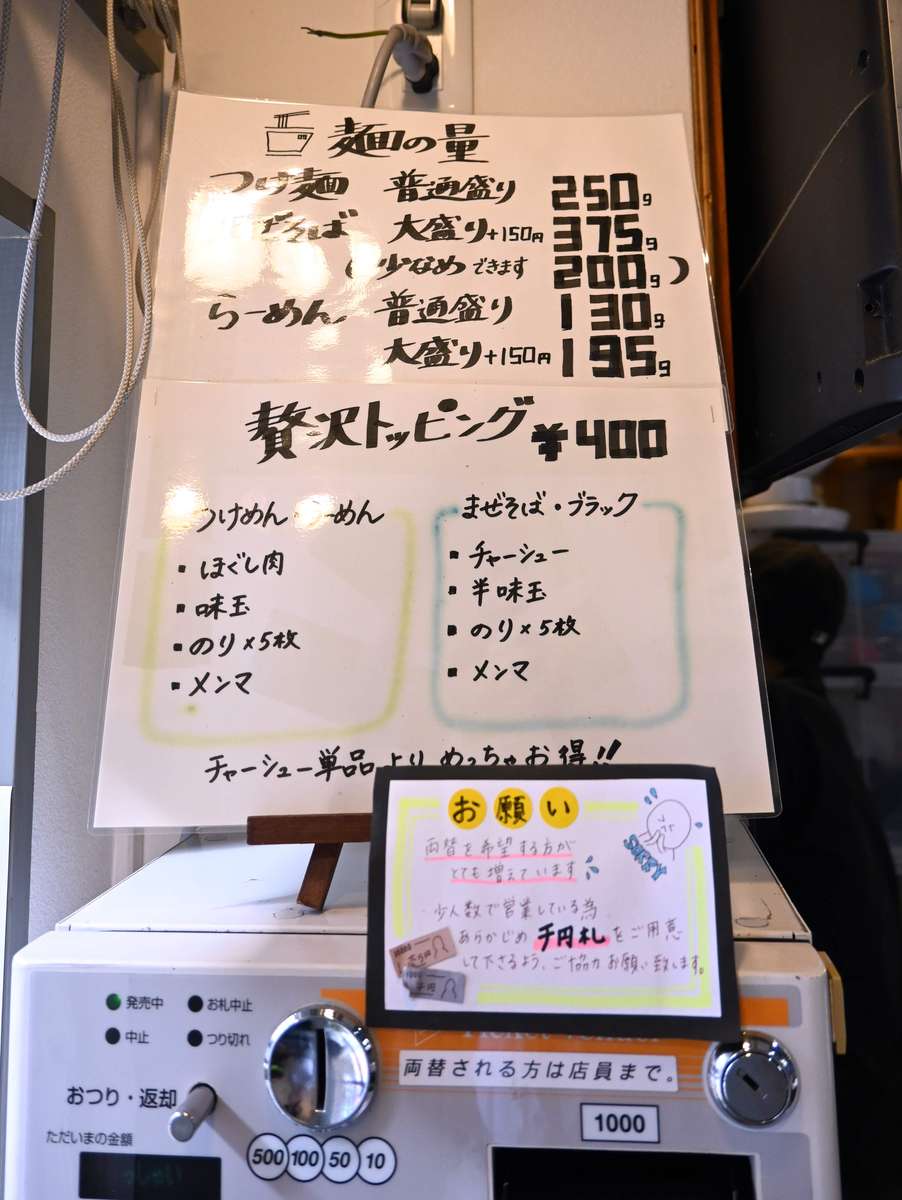
Information on the volume of the noodles
-
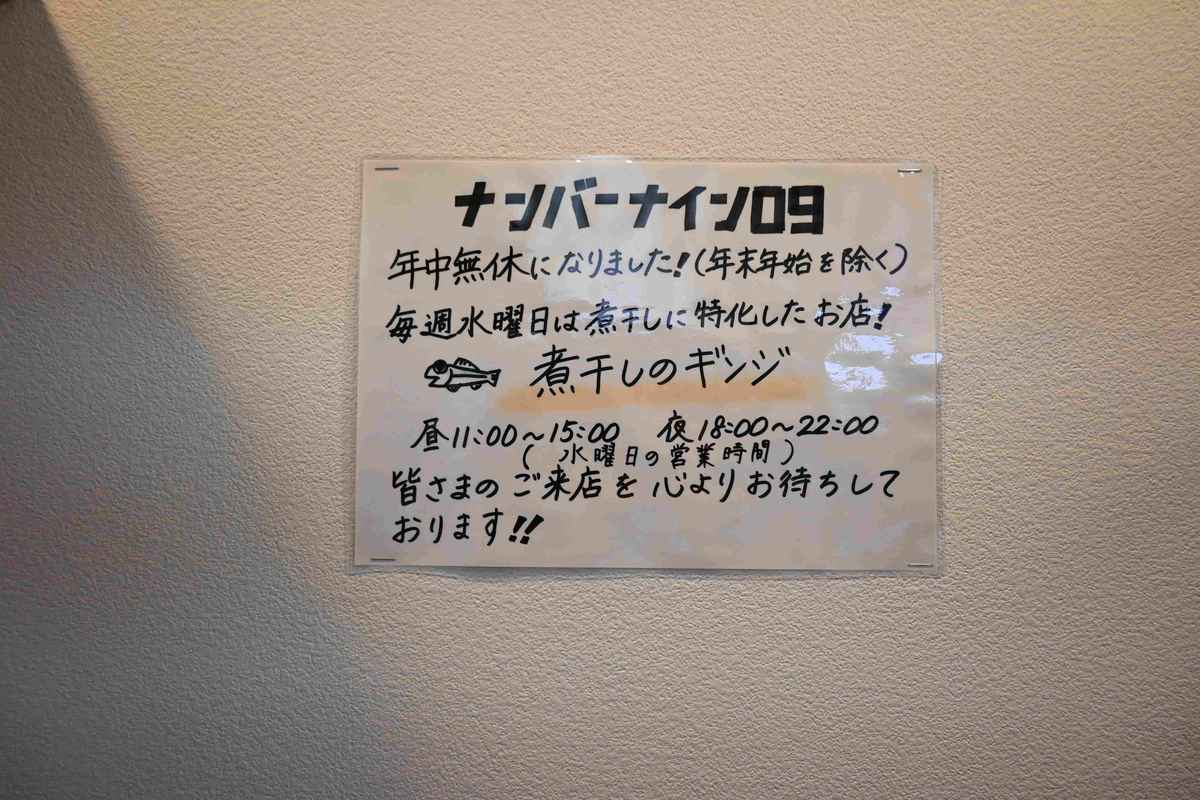
Information about “Niboshi no Ginji”, which serves ramen menus based on fish on Wednesdays
“I often start preparing at half past midnight,” Sawaki says. Every day, he prepares the pork and seafood broth before the shop opens. As a result of his efforts, 11½ years on, the shop has become a popular long-established eatery in Soka. It is supported by many fans, mainly from the local area, although there is a customer who makes the two-hour drive from Chichibu, Saitama Prefecture.
“I still do hard physical labor, but I can keep doing it because I love it,” Sawaki said, while smiling brightly.

Number Nine 09
2-2-6 Takasago, Soka, Saitama Prefecture. Lunch is from 11 a.m. to 3 p.m. Dinner is from 6 p.m. to 11 p.m. The shop is open all seven days a week. On Wednesdays, the shop’s manager serves special menus of niboshi (dried fish) ramen, under the name “Niboshi no Ginji,” and the shop is open until 10 p.m. For more information, please see the shop’s official X account (@09Numbernine09).
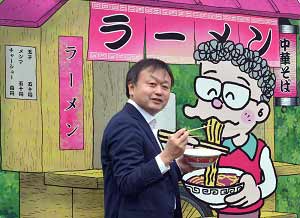
Futoshi Mori, Japan News Senior Writer
Food is a passion. It’s a serious battle for both the cook and the diner. There are many ramen restaurants in Japan that have a tremendous passion for ramen and I’d like to introduce to you some of these passionate establishments, making the best of my experience of enjoying cuisine from both Japan and around the world.
Japanese version
【ラーメンは芸術だ!】ラーメン激戦区・草加で人気の「ナンバーナイン09」店主が夜通し仕込む骨太の一杯

"JN Specialities" POPULAR ARTICLE
-

English-language Kabuki, Kyogen Entertain Audiences in Tokyo; Portland State University Professor Emeritus, Graduates Perform
-

The Japan News / Weekly Edition (11/14-11/20)
-

Yomiuri International Cooperation Prize: Prize fosters future generations of professionals
-

Tokyo’s Biggest Exhibit on Donald Keene Set to Open Saturday at Setagaya Literary Museum; Many Pieces to Be Displayed for 1st Time
-

Noodle Dining Shunsai / Rich Oyster Ramen to Savor at Odasaga; Experienced 68-year-old Owner Creates Numerous Ramen Varieties
JN ACCESS RANKING
-

Govt Plans to Urge Municipalities to Help Residents Cope with Rising Prices
-

Japan Resumes Scallop Exports to China
-

Japan Prime Minister Takaichi Vows to Have Country Exit Deflation, Closely Monitor Economic Indicators
-

Japan to Charge Foreigners More for Residence Permits, Looking to Align with Western Countries
-

JR East Suica’s Penguin to Retire at End of FY2026; Baton to be Passed to New Character
